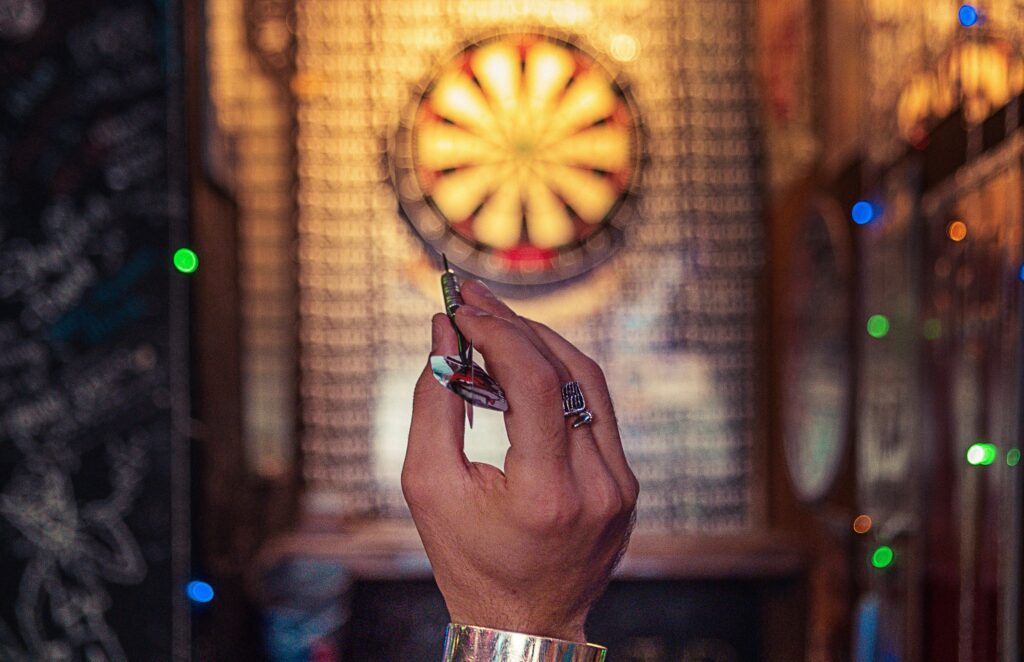Traditionally, advertisements have been a deviation from the content audiences want to consume. A pause in the TV show. A break in the article. A stop to the music or podcast. Ads and content were distinct.
Influencer marketing (IM) breaks this paradigm. IM is a different game altogether, and not just another media channel to reach your audience. Click here to find out more about our influencer marketing services.
Influencer Marketing Fuses Content and Ads
Influencer marketing abandons the traditional deviation and instead, fuses ads into the content the audience seeks. Recognizing this, TikTok advises, “Don’t make ads, make TikToks.” The social media giant describes this guidance as, “an invitation [to brands] to be more creative, more authentic, and to create content that truly speaks to people.”The continuing growth of influencer marketing is part of an ongoing shift away from traditional channels to digital advertising. According to Media Focus’s 2021 annual summary, internet is now the dominant media group in Switzerland, with a 30% share of the media mix 2021, replacing TV.
Influencer marketing is never a standalone measure. For the best outcomes, it’s crucial to carefully sync timelines between media and influencer marketing campaigns.
— Martina Klieber, Publicity Manager at Universal Pictures Switzerland
The Proximity of Social Friends Makes Influencers Relatable
People follow influencers because they genuinely like the person, or at least their content. Our social media friends may not always be in close physical proximity, but we feel close to them. Connections make digital friends, and social media serves as a direct channel into their lives. Many influencers are living normal lives that their followers can relate to. They might shop at the same stores, visit the same restaurants, and wear the same clothes. We could even imagine running into them in real life.
While influencers are people we admire, they are still living lives that are attainable, as opposed to hugely distanced celebrities. “Influencers are per se already more authentic than classic celebrities because they interact with and are connected with their communities, which they built up on social media from day one,” said Anja Lapčević, Co-CEO & Chief Influence Officer at Kingfluencers.
Classic celebrities conduct monologues, whereas influencers conduct dialogues. “Engagement and interactivity are much more possible with influencer marketing which is something that traditional advertising can never achieve,” said Yoeri Gabriel Callebaut, Co-CEO and Chief Growth & Marketing Officer at Kingfluencers.To their community members, an influencer can feel like part of their friendship circle, helping drive high levels of engagement. TikTok influencers are particularly close. Even smaller influencers have engagement rates of 17.96% on TikTok, as opposed to 3.86% on Instagram, and 1.63% on YouTube.
Although celebrities are more popular for advertisements due to their recognizability, influencers, on the other hand, would get direct feedback from their communities, positive and negative.
— Anja Lapčević, Co-CEO & Chief Influence Officer
All in all: “With influencer marketing, you can really reach specific communities that might be hard to reach with regular advertising,” said Yoeri.
Influencers Bring Brands Into People’s Inner Circle
Traditional ads always feature a product for purchase. Typically, the people featured are actors, and even when real spokespeople are used, it’s obviously advertising.
But IM is a distinct approach from regular advertising.
Partnering with influencers gives brands an authentic and relatable representative. Influencers can serve as a true face, a real person within settings that people relate to. These attributes make IM special, and the result is to bring brands into people’s inner circle. 4 in 10 millennial YouTube subscribers say their favorite influencer understands them better than their friends.Influencers are remarkable storytellers who are uniquely able to bridge the space between brands and people in order to establish powerful connections. Brands have the ability to select influencers who are already talking about their type of product. Careful selection results in ideal matches for seamless brand and influencer connections.

Another important aspect to look out for as a brand is the target audience of the influencer/s. If a female influencer’s audience is 80% male, an influencer marketing campaign for a women’s perfume would not work too effectively. If an influencer’s audience is 70% teenagers and students, an influencer marketing campaign for a designer bag would not deliver a great ROI. An influencer who doesn’t drink alcohol would not accept an offer for a beer campaign. The brand’s target audience should match as closely as possible with the target audience of the selected influencer/s.
Influencers Affirm Trust by Displaying Authenticity in Approach to Ads
In a wonderful display of transparency, Danish influencer Kellylouisekilljoy, acknowledged the stigma of influencer ads and expressed her appreciation for her community’s positive reception of ads. “It makes me so extremely happy because for me to continue to do content full time, it means I have to do ads…We don’t have Creator Fund in Denmark or any of the Nordic countries. Even if we did, it still wouldn’t be enough to make a standard my-adult-bills-are-paid salary.”
Kelly promised that the brands she works with are carefully selected and stated, “My mission is to make ads for you which both look and feel like my regular content. I refuse for you as my audience to feel like there are ad breaks when you scroll through my content page.” Such an honest overview of her approach to ads contributes to authenticity. Acknowledging her appreciation and respect for the audience helps build and solidify their trust.Writing for MarTech, Kim Davis states, “The growth of interest in short-form video and engagement with social channels that host it … Put that together with the soaring importance of social commerce, and the appetite among audiences for authentic content rather than just ads, and it’s easy to see influencer marketing as a mainstream marketing channel and not just an interesting add-on.”
Anja’s Top 9 Tips: What Brands Should Look Out For Regarding Influencer Selection
- Main message: What are the influencer’s main messages and do they align with your brand’s mission and vision?

2. Target group: As obvious as this sounds, it is crucial that the influencer’s and your brand’s target audiences align as closely as possible to ensure campaign success. Look at their active followers closely and be sure to ask the influencers for their stats. Also, make sure that the locations of the followers match with the locations of your target audience. There are many amazing Swiss influencers that have huge international followings but if you are a Swiss company that sells products in Switzerland only, make sure you select influencers with a high Swiss reach.
3. Authenticity: One great advantage that influencers have over classic celebrities is their authenticity. In most cases, influencers actually use the products or services that they make branded content for. Make the most of this and let your brand actually connect with the target audience instead of just bringing awareness.
4. Brand fit: Would the influencer likely use your products or services or do they already use them? It doesn’t even have to be an obvious choice, i. e. a beauty influencer for a face cream. A comedian, for example, could also participate in a campaign for the newest face cream. Be unique with your approaches while still making sure that the goals and objectives align.
5. Content & style: Look out for influencers that publish great quality content that also fit the brand/campaign. Most of the time, the quality of the content is better than the quantity of followers that the influencer has. You will be surprised: We know many micro and nano influencers that publish amazing branded content that are then used in the brands’ other marketing mediums, such as newsletters.
6. Community engagement: As important it is that the influencer’s target audience matches with your brand’s, it is important to also consider their engagement rates. What’s the point of an influencer’s target group that fits perfectly with yours but isn’t very active and therefore might not even notice the branded content from that influencer?
7. KPIs & stats: Before the customer searches and selects an influencer, they must know what requirements and expectations they have of the influencer. These must be clear and, above all, related to the medium of influencer marketing and not simply taken from classic advertising. Because with influencer marketing, you work with people and a community, not with machines or models.
8. Format & medium: Is your selected influencer in the platforms where your brand wants to be present? Is the influencer able to create the desired content in the right form? Does your brand want to use the content generated from the influencer marketing campaign in other medias? If so, then brands should brief the influencers accordingly to ensure the correct format and quality of the images/videos. Make sure that the influencer is familiar with that particular format, i. e. don’t expect high quality and artistic images from an influencer that mostly posts Reels or TikToks and vice versa.

9. Recognizability (for larger campaigns): As previously mentioned, the advantage that celebrities have over many influencers is that their faces are recognizable by the masses. Nowadays, many macro influencers are more recognizable and some even have celebrity status in their areas or even multinationally. Take advantage of that and add a few macro influencers in your influencer selection that fit your brand to spread awareness quickly and effectively. Macro influencers have not gained their success for no reason after all. Also, thanks to platforms like TikTok, new breakout-stars emerge weekly, due to viral contents that get pushed by the platforms’ algorithms
CASE STUDY: Feel-Good Stories Shared within The Inner Circle

Kingfluencers worked on campaigns to promote V6 chewing gum. To highlight the unique health and well-being benefits of V6, the team chose influencers focused on health, nature, and an overall positive outlook. In one campaign, influencers shared a story in which they received the most beautiful compliment and why it made them smile, then encouraged their communities to share their own stories, achieving an engagement rate higher than average on Instagram and Facebook.
Picture: Zoe Torinesi for the V6 campaign
The Future of Advertising
Within the last few years, there has been a clear shift in advertising mediums: Advertisers are investing less in traditional media and more in digital, especially mobile. According to GroupM’s global mid-year report (June 2020), traditional ad format spending is expected to fall by 20.7% while digital advertising will have up to a 67% market share by 2024 already.
While digital and mobile advertising has been continuing to rise, new formats have been trending. Live shopping and social selling are currently trending topics. To find out more about these two digital advertising formats as well as other predictions in social media and influencer marketing, click here for our free downloadable guide and click here to find out more about our influencer marketing services.
Author: Megan Bozman, Owner @Boz Content Marketing
